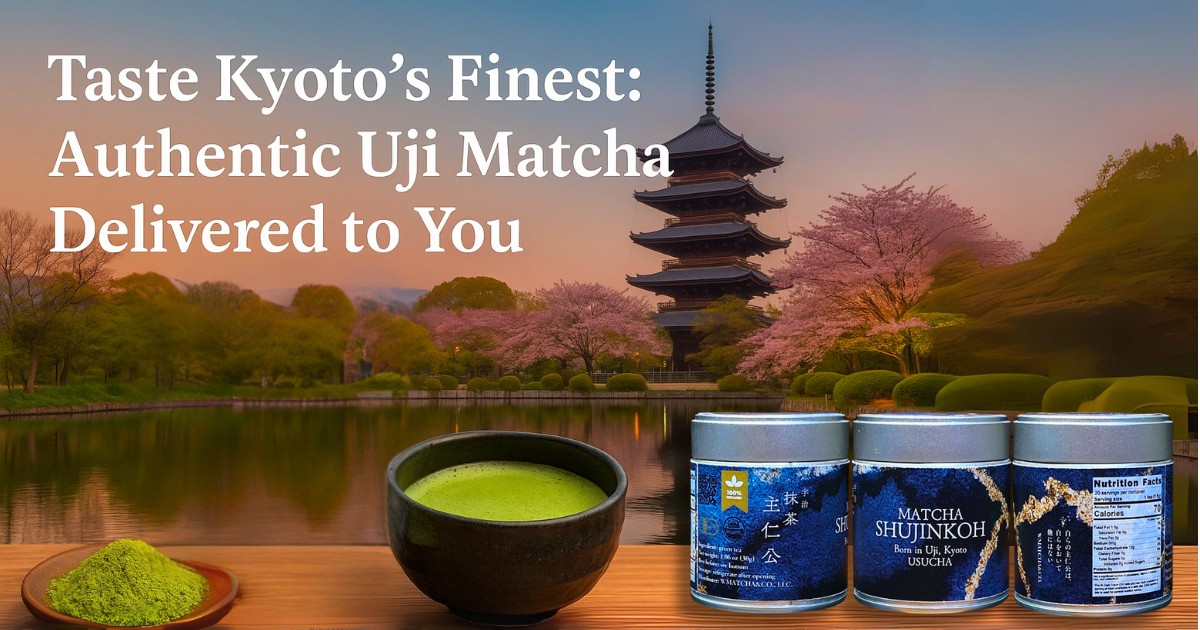
In recent years, matcha has transformed from a quiet tradition in Japanese tea rooms into a vibrant global phenomenon.
From minimalist cafés in New York to rooftop brunches in London and wellness retreats in Bali, the striking green powder has become a universal symbol of health, mindfulness, and cultural sophistication.
But here’s the truth: much of the matcha sold abroad barely resembles the rich, aromatic powder that Kyoto’s tea masters have perfected over centuries.
The real magic of matcha comes from authenticity—quality leaves, traditional processing, and a cultural heritage that can’t be mass-produced.
In this guide, you’ll discover why Uji matcha, cultivated in the misty hills of Kyoto, is considered Japan’s crown jewel, the science-backed health benefits that make it worth your attention, and how you can enjoy this centuries-old tradition in your own home with Shujinko Organic Uji Matcha—one of the most authentic matcha products available online.
The Matcha Boom: A Growing Global Obsession
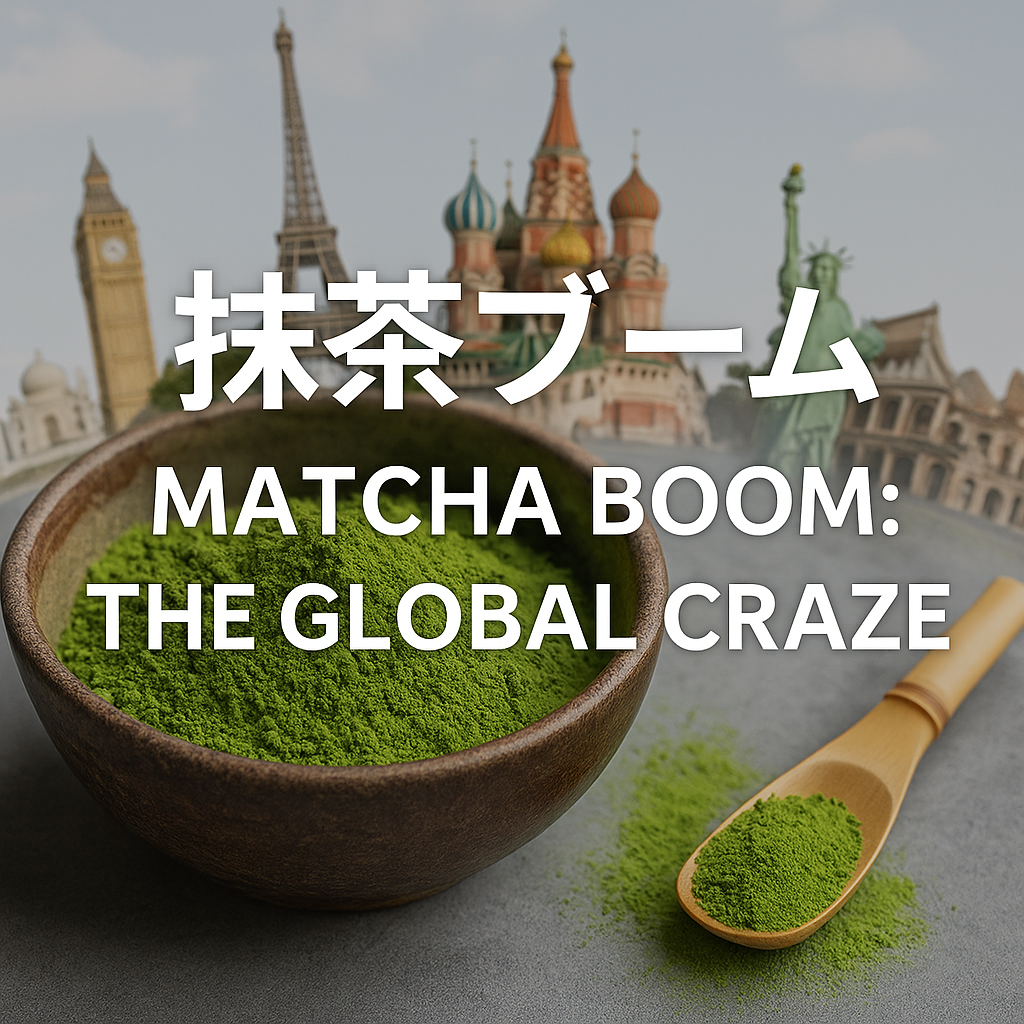
Over the last decade, matcha has shifted from being a niche product for Japanese tea enthusiasts to a staple in coffee shops, bakeries, and health food stores worldwide.
According to Grand View Research, the global matcha market was valued at $4.3 billion in 2023 and is expected to reach $7.43 billion by 2030, growing at a steady 7.9 % CAGR.
North America and Europe have seen exponential growth thanks to social media trends—vivid green matcha lattes and desserts dominate Instagram feeds—while in Australia and Southeast Asia, matcha has been embraced for its versatility in fusion cuisine.
But beyond its photogenic appeal, matcha has been adopted by the wellness community for its nutrient density and calming energy boost.
Celebrities, nutritionists, and athletes praise it as a cleaner, more sustained source of focus compared to coffee. This cultural and health-driven demand has created an unprecedented opportunity for authentic Japanese producers to reach an eager international audience.
Health Benefits Backed by Science
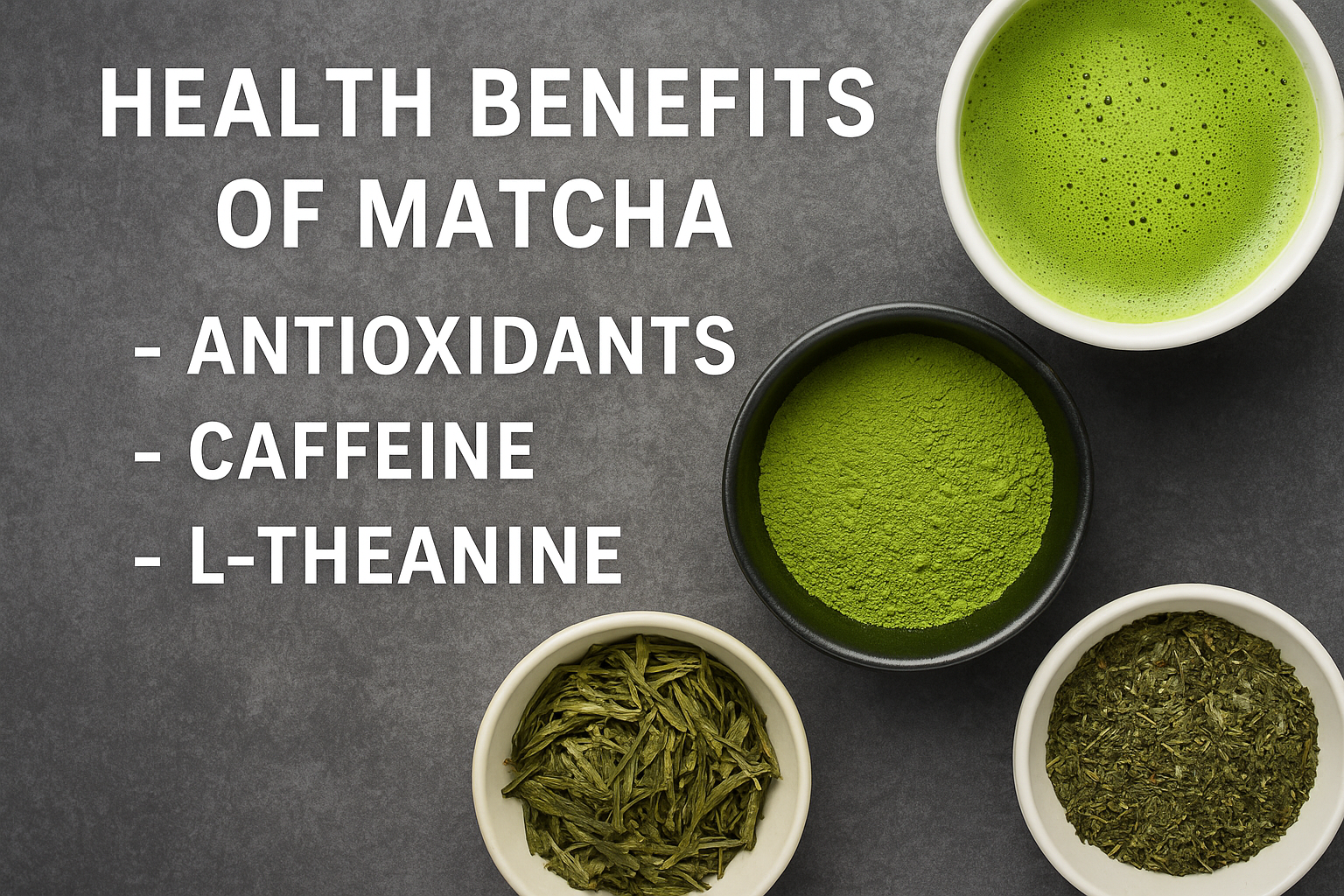
Matcha is more than just a pretty green drink—it’s a nutritional powerhouse backed by modern science.
Here’s why it’s become a daily ritual for health-conscious people around the globe:
- Rich in Antioxidants
High-grade matcha contains up to 137 times more catechins than regular green tea. Catechins, particularly EGCG (epigallocatechin gallate), are known for their ability to combat oxidative stress, reduce inflammation, and protect against chronic diseases. - Calm, Focused Energy
Unlike coffee’s quick caffeine spike, matcha delivers a balanced lift. L-theanine, a rare amino acid found in tea leaves, works synergistically with caffeine to promote alert relaxation—sharp focus without the jitters. - Metabolism & Heart Health
Clinical studies have linked regular matcha consumption to increased fat oxidation and improved cardiovascular markers. In one study, participants drinking matcha before exercise burned 17% more fat compared to those who didn’t. - Supports Gut Health
Polyphenols in matcha feed beneficial gut bacteria, supporting digestion, immunity, and mood regulation. - Sustained Energy Without Crash
Thanks to its unique chemical profile, matcha offers 4–6 hours of steady energy release, making it ideal for productivity, study, or athletic performance.
For those seeking a natural, multi-benefit beverage, matcha stands out as both a functional superfood and a cultural experience.
Why Uji Matcha Is Japan’s Crown Jewel

Nestled in the rolling hills just south of Kyoto, the town of Uji has been synonymous with premium green tea for over 800 years.
Its reputation began in the Kamakura period (1185–1333), when Zen monks brought tea seeds from China and planted them in Uji’s fertile soil.
The region’s misty mornings, mineral-rich earth, and gentle climate created the ideal environment for producing tea leaves with a unique depth of flavor and an intense emerald hue.
Unlike mass-produced matcha grown in other parts of the world, Uji tea farmers still follow traditional cultivation methods.
One of the most important steps is “tana” shading, where tea plants are covered for several weeks before harvest to encourage chlorophyll production and boost L-theanine content.
This results in a sweeter, umami-rich flavor profile that is unmatched by unshaded tea.
After harvest, leaves are steamed, dried, and then stone-ground into an ultra-fine powder using granite mills.
This slow process prevents heat buildup, preserving the leaf’s vibrant color, delicate aroma, and nutritional integrity.
Many of these techniques have been passed down through generations of Uji tea masters, ensuring that every tin of authentic Uji matcha is both a drink and a piece of cultural heritage.
For the Japanese, serving Uji matcha is not just about refreshment—it’s an act of hospitality, respect, and mindfulness.
For international tea lovers, it’s an opportunity to taste the result of centuries of perfected craftsmanship.
Meet Shujinko: Uji Organic Matcha by WMATCHA&CO.
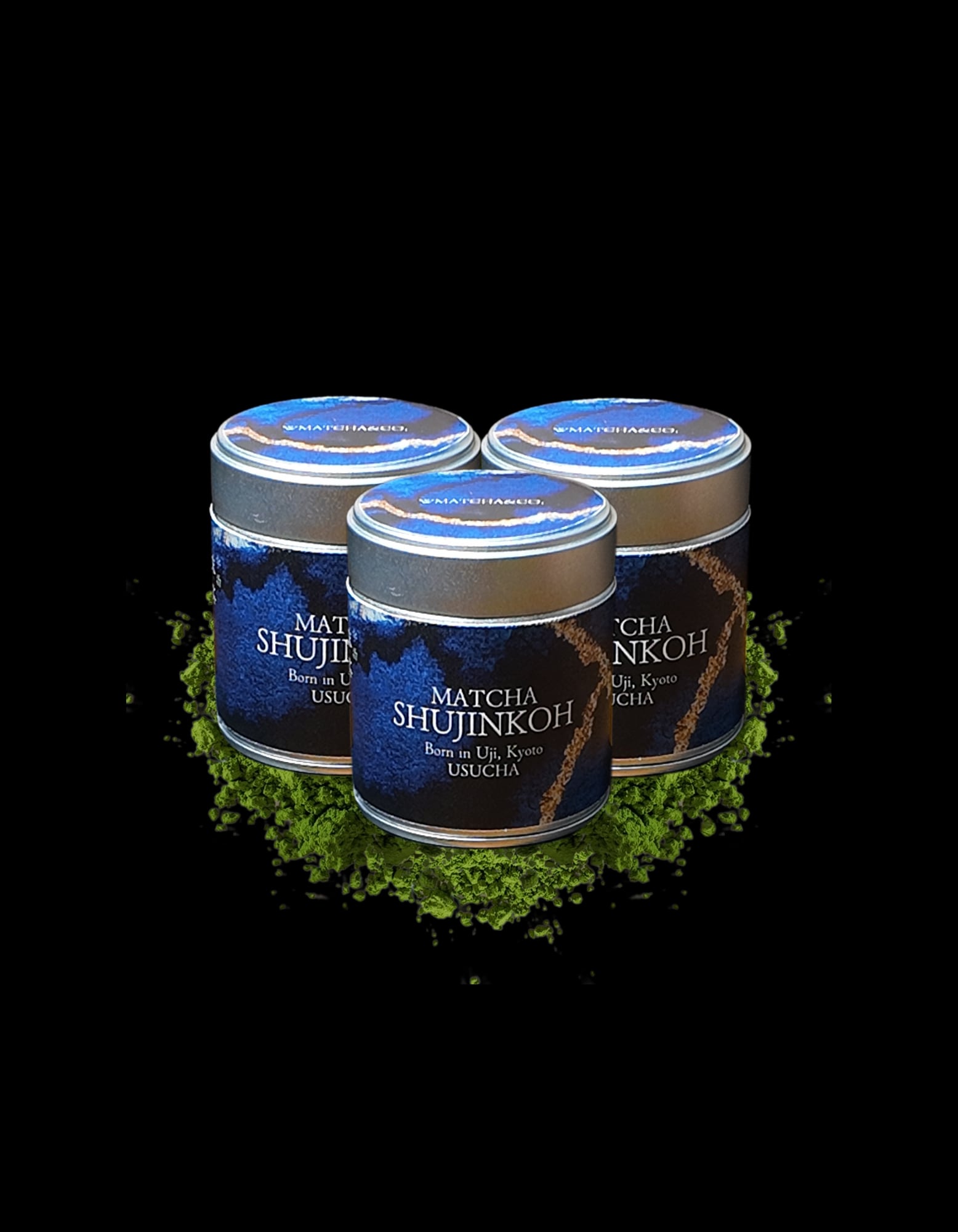
In a market flooded with matcha options, Shujinko Organic Uji Matcha stands apart as a rare combination of authenticity, craftsmanship, and modern elegance.
Produced in the heart of Uji, this matcha is made from organically grown tea leaves cultivated without pesticides or synthetic fertilizers, ensuring a pure, clean flavor that reflects centuries of tea-making tradition.
What truly sets Shujinko apart is its Urasenke tea master endorsement—a seal of approval from one of Japan’s most prestigious tea schools.
This means every tin meets the same high standards required for the formal Japanese tea ceremony, an art form that emphasizes harmony, respect, and mindfulness.
Shujinko’s reputation extends beyond Japan.
In 2025, it was served at the official private gala of the Cannes Film Festival, allowing international guests to experience Kyoto’s quiet elegance on one of the world’s most glamorous stages.
The packaging itself tells a story.
Each 80g jar is presented in a minimalist yet refined design and accompanied by a booklet explaining the meaning of “Shujinko” (“protagonist”).
The concept is rooted in the belief that our lives are intertwined with others, and that we are at our best when we live with empathy and connection—a philosophy deeply tied to Kyoto’s wabi-sabi aesthetic.
When you buy Shujinko, you’re not just purchasing matcha—you’re bringing home a piece of cultural heritage, crafted with integrity and meant to be savored slowly.
How to Enjoy Matcha Like a Kyoto Tea Master
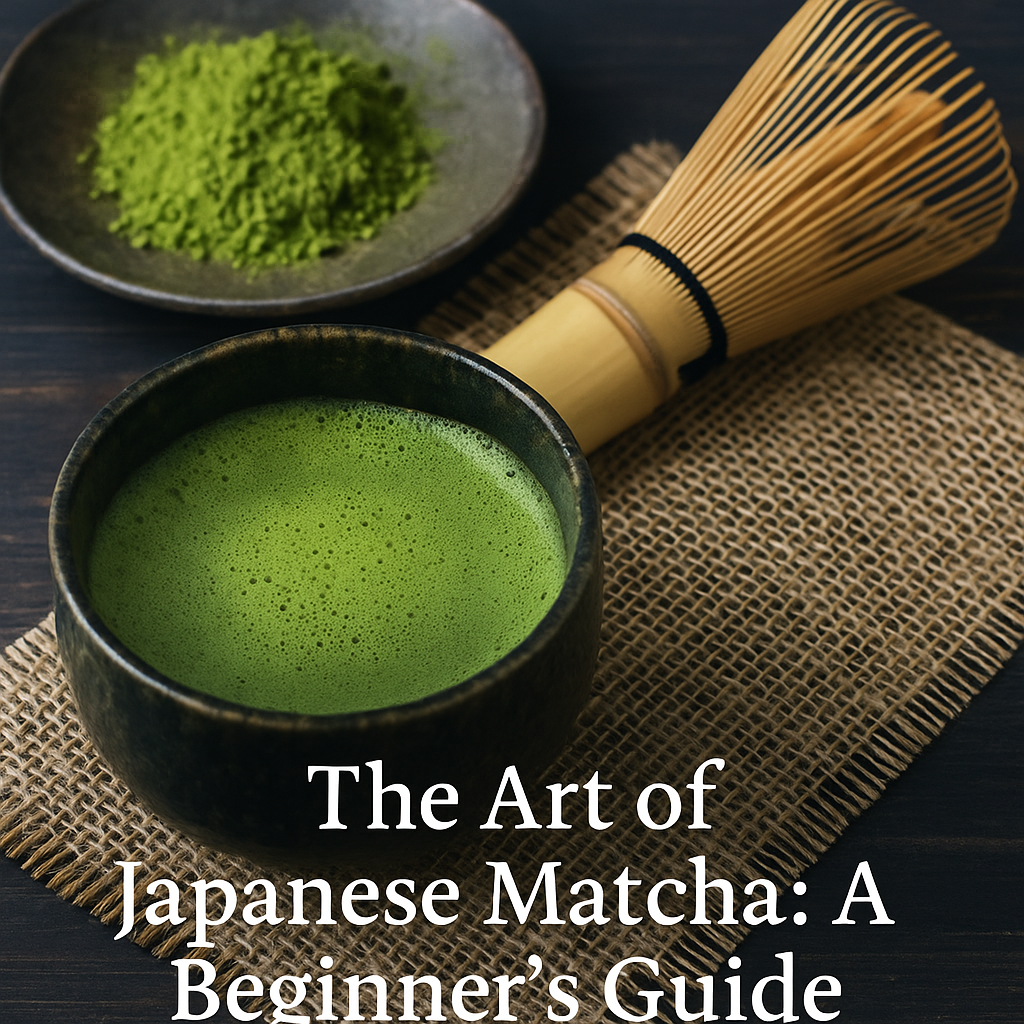
Preparing matcha is more than just mixing powder with water—it’s an art form that engages all your senses. Whether you want to experience the calm focus of a Japanese tea ceremony or simply upgrade your morning routine, here’s how to prepare Shujinko Organic Uji Matcha like a Kyoto tea master:
- Choose the Right Tools
Chawan (Tea Bowl): Wide enough for whisking and appreciating the froth.
Chasen (Bamboo Whisk): Creates a smooth, creamy foam.
Chashaku (Bamboo Scoop): Measures the right amount without compacting the powder. - Sift the Matcha
Place 1–2 teaspoons (2–4 grams) of matcha into a fine sifter over your chawan. Sifting prevents clumps and ensures a silky texture. - Add Water at the Right Temperature
Pour 60–80 ml (2–3 oz) of hot water at 80°C / 175°F—never boiling, as high heat can scorch the delicate tea. - Whisk in an M or W Motion
Hold the whisk lightly and move it quickly in an M or W shape until you see a thick layer of small bubbles. Aim for a fine, velvety foam without large bubbles. - Sip Mindfully
Hold the bowl with both hands, inhale the aroma, and take small sips. Allow the flavors—sweetness, umami, and subtle bitterness—to unfold on your palate.
Tip: For a modern twist, you can also make a matcha latte by adding steamed milk or plant-based alternatives like oat or almond milk.
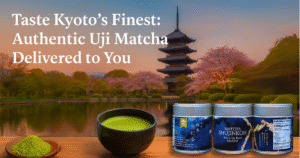
Comments